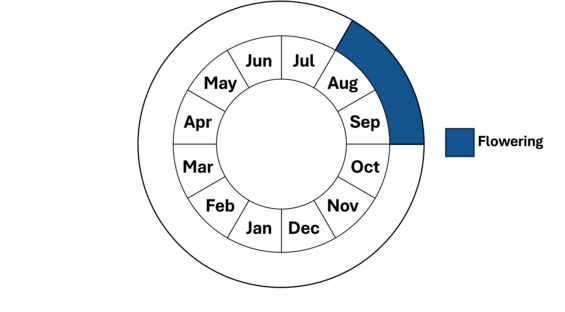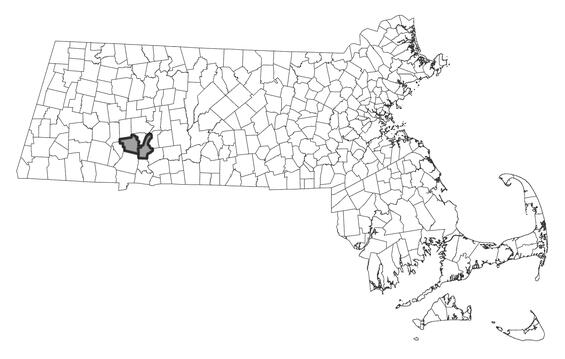- Scientific name: Pedicularis lanceolata
- Species of Greatest Conservation Need (MA State Wildlife Action Plan)
- Endangered (MA Endangered Species Act)
Description
Swamp lousewort is an erect, herbaceous, showy-flowered perennial in the Snapdragon or Figwort family (Scrophulariaceae). Its genus name comes from the Latin Pediculus, for louse, and reflects the early European belief that sheep and cattle grazing near louseworts would pick up lice. Wort is an Anglo-Saxon term for plant. The hairless, or nearly hairless, stems grow 3-9 dm (0.75-3 ft) tall and usually occur singly. Swamp lousewort's leaves are 5-10 cm (2-4 in) long, stalkless or short-stalked, and mostly opposite. They are lanceolate in general outline and pinnately lobed, with the sinuses extending less than halfway back to the midrib. The 15-25 mm (0.6-1 in) long, pale yellow to cream-colored flowers occur in a crowded spike (an unbranched, elongate inflorescence of stalkless flowers). The calyx (outermost floral whorl) is two-lobed, about 1 cm (0.4 in) in length, and has a toothed, foliar appendage on each side. The fruit is an ovoid, beaked capsule (a dry, many-seeded fruit derived from a compound pistil) that barely exceeds the calyx in length. Swamp lousewort flowers from mid-August to mid-September. The plant is a hemi-parasite whose seedlings must partially rely on other plants in order to develop normally.
There are two other species of Pedicularis that occur in New England: wood betony (P. canadensis) and Furbish’s lousewort (P. furbishiae). Swamp lousewort has opposite leaves and an entire galea while wood betony and Furbish’s lousewort have alternate leaves and toothed galeas. Differences in habitat, phenology, and geography also distinguish these three species. Swamp lousewort grows in wet soils and flowers late summer, whereas wood betony grows in dry woods or thickets and flowers in late May or June. Furbish’s lousewort only grows along the St. Johns River in Maine.
Life cycle and behavior
This is a perennial species.

Population status
Swamp lousewort is listed under the Massachusetts Endangered Species Act as endangered. All listed species are legally protected from killing, collection, possession, or sale, and from activities that would destroy habitat and thus directly or indirectly cause mortality or disrupt critical behaviors. The Massachusetts Natural Heritage & Endangered Species Program has 7 records from 3 counties: Franklin, Hampden, and Hampshire. Two of these records have been observed within the last 25 years.
Distribution and abundance
The documented range of Swamp lousewort spans from Massachusetts to Georgia on the east coast of the United States west to Missouri and Manitoba, Canada. Swamp lousewort is rare along the eastern coast of the United States but is relatively common in the Midwest. It is historically known from Delaware and Kentucky.

Distribution in Massachusetts. 2000-2025. Based on records in the Natural Heritage Database.
Habitat
Swamp lousewort grows in open areas that are periodically flooded such as wet meadows, marsh edges, and stream banks. It occurs primarily in calcareous soils but has also been found growing in a non-calcareous wetland in Connecticut. Associated species in Massachusetts include: arrow-leaved tearthumb (Persicaria sagittata), false nettle (Boehmeria cylindrica), glossy buckthorn (Frangula alnus), hog-peanut (Amphicarpaea bracteata), jewelweed (Impatiens capensis), reed canary grass (Phalaris arundinacea), rough-stemmed goldenrod (Solidago rugosa), and smooth brome (Bromus inermis).
Healthy habitats are vital for supporting native wildlife and plants. Explore habitats and learn about conservation and restoration in Massachusetts.
Threats
Swamp lousewort thrives in open sunny habitat, so competition from woody vegetation or invasive species are a threat. In addition, activities that alter hydrologic regimes (i.e., beaver dams) are a threat because swamp lousewort requires periodic, but not constant, flooding. Damage from off-road vehicles and trampling by hikers pose a threat for swamp lousewort growing along trails.
Conservation
Sites containing swamp lousewort should be monitored for over-shading caused by the succession of woody vegetation and/or invasive species. Efforts to remove competitive associated species should strive to not inadvertently eliminate host plants. Some documented host plants of swamp lousewort include: common rush (Juncus effusus), reed canary grass (Phalaris. arundinacea), smooth brome (Bromus inermis), and wool-grass (Scirpus cyperinus). Note that some invasive species (i.e., reed canary grass) are also hosts of swamp lousewort, making the management of heavily invaded areas complicated. Sites should also be monitored for changes in hydrologic regime because swamp lousewort requires occasional, but not persistent, flooding. In Massachusetts, beaver activity may cause local declines in swamp lousewort if beavers flood areas where the plant grows at the time of flowering or seed set.
All active management of rare plant populations (including invasive species removal) is subject to review under the Massachusetts Endangered Species Act and should be planned in close consultation with the MassWildlife’s Natural Heritage & Endangered Species Program.
Contact
| Date published: | May 1, 2025 |
|---|